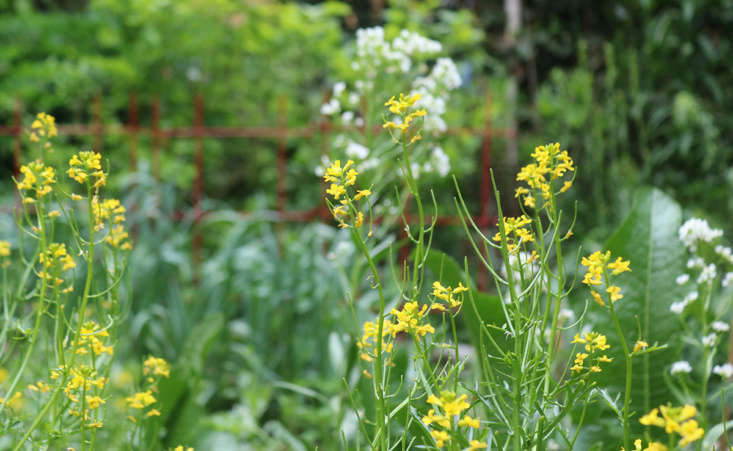The beauty of flowers sometimes makes us believe that appearance is all they have to offer. But like other edible plants, flowers can bring to our plates (and glasses) elements of texture, aroma, and flavor. While some edible flowers have better looks than flavors (I’m looking at you, violas), many others have herbal or sweet personalities that make them valuable ingredients in everything from cocktails to salads to dessert.
Read on for 16 edible flowers that taste as good as they look.
Photographs by Marie Viljoen
Arugula (Eruca sativa)

See more growing tips in Arugula: A Field Guide to Planting, Care & Design.

Barberry (Berberis)

Begonia (Begonia)

See more growing tips in Gardening 101: Hardy Begonia.
Borage (Borago officinalis)

See more growing tips in Borage: A Field Guide to Planting, Care & Design.
Milkweed (Asclepias syriaca)

The unopened flower buds are a delicious cooked vegetable, and the fragrant open flowers can be fried into celebratory beignets. Milkweed cordial is a delicious drink, a deeply tinted dark pink; to make it, see Recipe: Milkweed Flower Cordial Captures Summer in a Glass.
Ground Elder (Aegopodium podagraria)


Hyssop (Agastache)

The minty blooms are fantastic in fruit salads as well as mixed drinks, while the anise-flavored flowers work well in savory dishes, especially with grilled fish or in fennel-and-citrus salads. See more growing tips in Hyssop: A Field Guide to Planting, Care & Design.
Japanese Honeysuckle (Lonicera japonica)

Lavender (Lavandula)

See more growing tips in Lavender: A Field Guide to Planting, Care & Design.
Locust (Robinia)

Dip them in a batter for a decadent fritter, or eat them raw in salads. Southwestern R. neomexicana has pink flowers, and is equally edible.
Magnolia (Magnolia)

Use large-petaled blooms (like endive in texture) as edible receptacles for a herbed chicken salad, or a shrimp cocktail.
Which magnolia tree would look prettiest in your garden? See our guide to Magnolias: A Field Guide to Planting, Care & Design.
Wild Pea (Lathyrus)

Winter Honeysuckle (Lonicera fragrantissima)

Wisteria (Wisteria sinensis), (W. frutescens)

See more growing tips in Wisteria: A Field Guide to Planting, Care & Design.

Wisteria frutescens is a North American native, and less aggressive than the invasive W. sinensis.
Virginia Bluebells (Mertensia virginica)

Yucca (Yucca)

Tell us your favorite edible flower stories. What are you eating, and how?
When you grow the food you eat, it tastes better—and you know exactly what you are eating. Browse our Plant Based Diet archive for recipes. Don’t miss:
- 5 Veggie Substitutes for Pasta
- Recipe: Tea Cake with Meyer Lemons and Rose Geraniums
- Modern-Day Canning: Everything You Need to Know, Step by Step
- Recipe: Amaranth Banana Bread, Flowers Optional









Have a Question or Comment About This Post?
Join the conversation